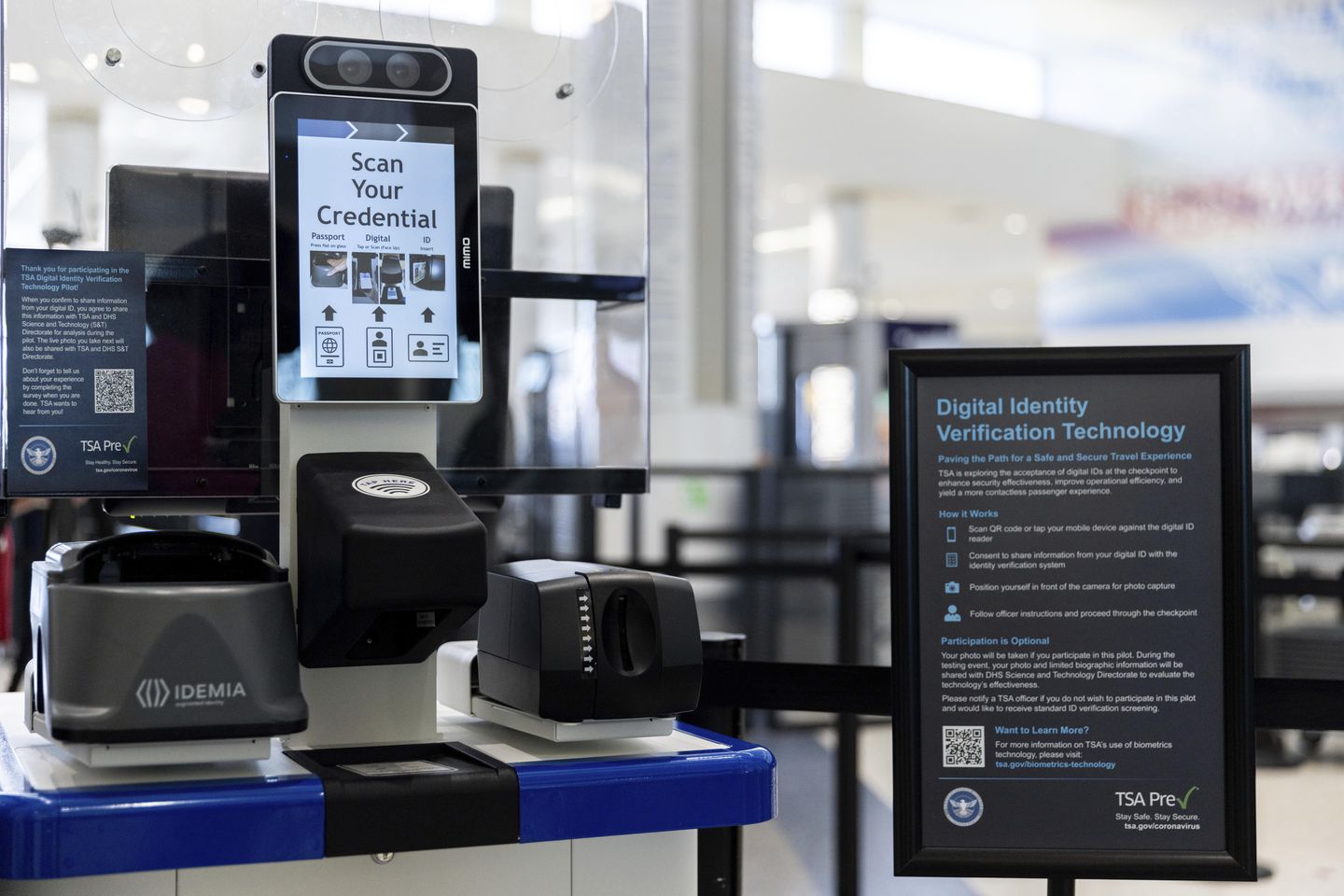
The government’s civil liberties watchdog gave a relatively clean bill of health to the TSA’s use of facial recognition technology to screen travelers, saying it’s strikingly effective and is largely immune to abuse.
Facial recognition can do better than human screeners at matching faces with identity documents, the Privacy and Civil Liberties Oversight Board said.
And as of now, the Transportation Security Administration’s use of FRT is voluntary, which helps reduce the risks of abuse, the board said in a report Friday.
But it said the TSA could do better on transparency and reassuring the public about how the technology is being used.
The board also said the TSA may be leaving an important tool on the table because it does not use facial recognition to try to spot terrorism suspects.
Board member Beth A. Williams said that was surprising, and said it could undermine confidence in the program, since travelers may be willing to put up with what they see as a civil liberties intrusion because they think there’s a security payoff.
She told the TSA to study whether it is possible to add terrorist watchlist data to its facial recognition checks.
TSA uses two types of facial recognition. One is known as 1-to-1 and involves a check of individuals against their identity documents, just as an officer would perform. The other, being tested at 10 airports, is known as 1-to-many, and it is used on those in pre-check or trusted traveler programs, where the system scans faces against people expected to be at the airport that day.
The 1-to-1 algorithm has a false positive rate — meaning it lets through someone it shouldn’t — less than 1 in 100,000 travelers. The false negative rate — where it mistakenly says someone doesn’t match their documents — is below 1 in 100.
The 1-to-many algorithm is somewhat worse, at a false positive rate of 3 per 1,000 and a false negative rate of between 7 and 440 per 10,000 in testing done by the National Institute of Standards and Technology.
“In an environment such as airport security, where photographs are taken in good lighting, with cooperative subjects looking directly ahead, and using high-quality cameras, the accuracy of high-quality FRT systems can surpass that of trained humans,” the board concluded in the new staff report.












